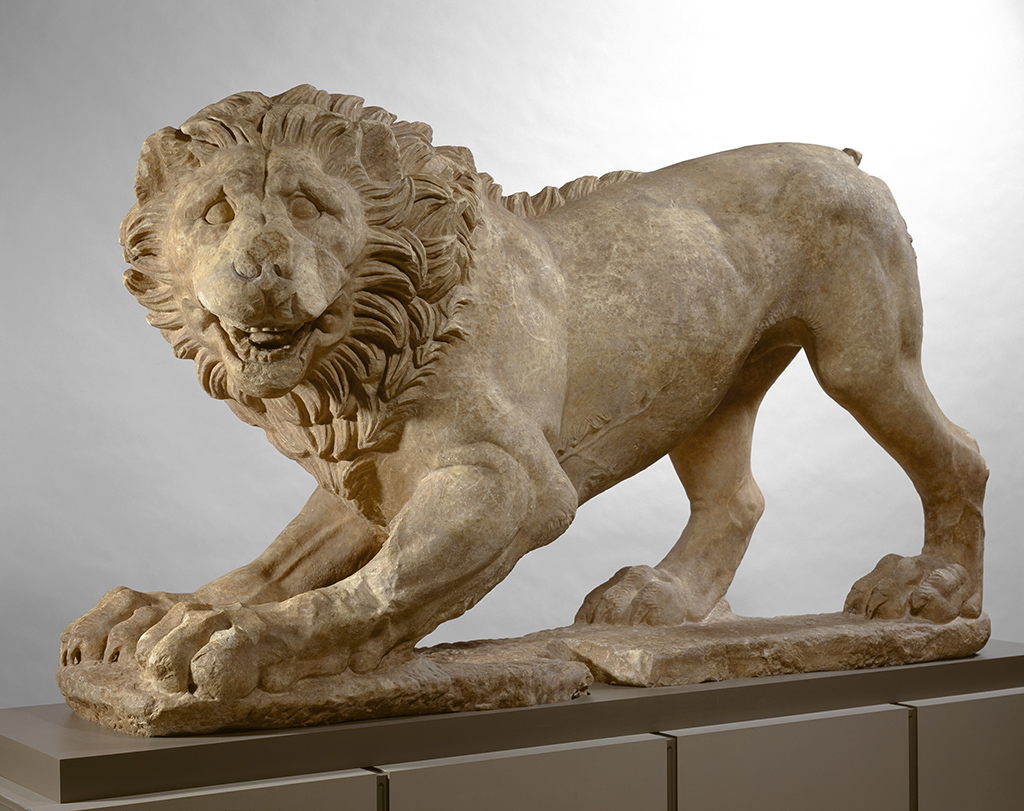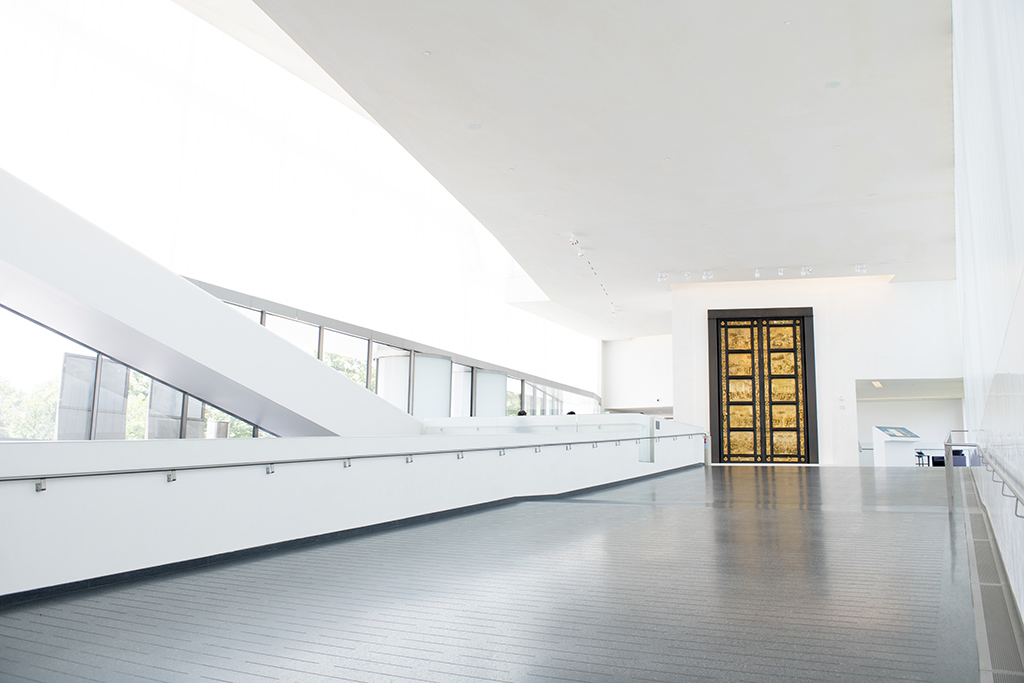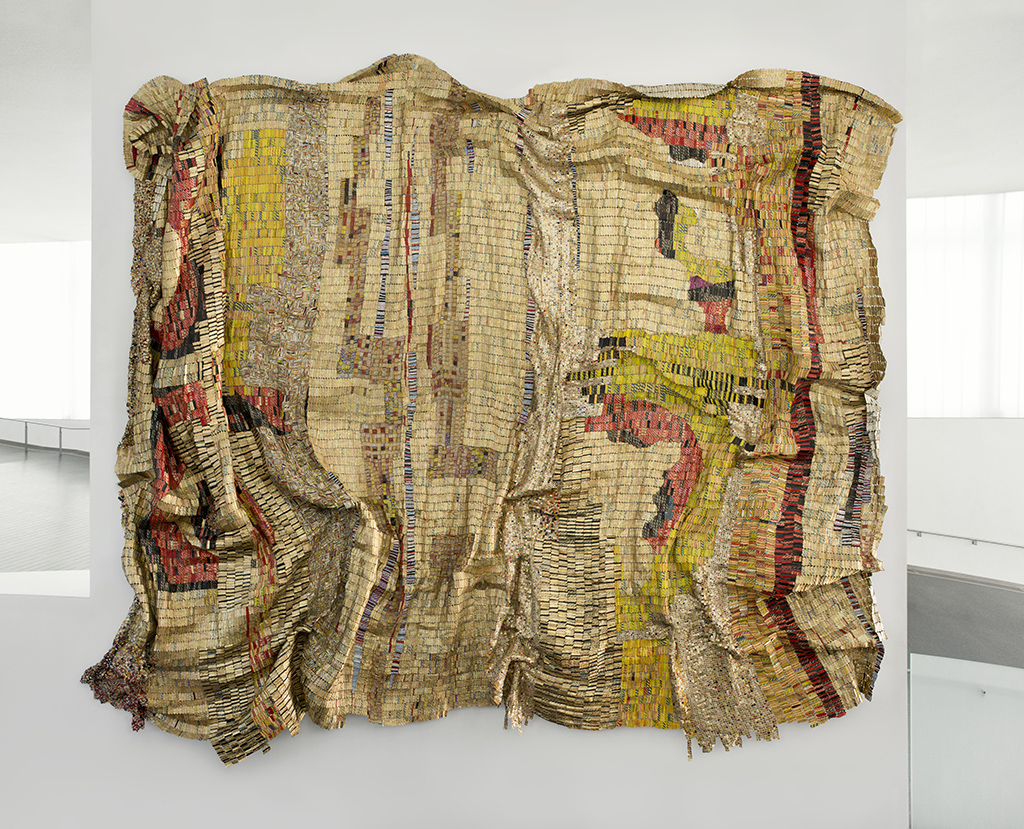Tour Overview
Museums care for and display works of art to the public. People working in museums must consider many factors when deciding how to do that. The choices they make can have an impact on how people experience and understand works of art.
Outcomes
- Students will become familiar with museum careers, including conservators and curators.
- Students will consider the factors that go into determining how works of art are cared for and displayed within museums.
- (For 7th-12th) Students will reflect on the impact of displaying works of art in particular ways within a museum.
Content

3rd – 6th: Students consider the conservation issues associated with an ancient Greek sculpture, examine commonalities among works displayed in the American art galleries, and plan their own grouping of works for display.
7th – 12th: Students consider questions of conservation and installation related to a Renaissance artwork, explore curatorial choices involved in a museum gallery of their choosing, and select the installation location for a contemporary African sculpture.


Curriculum
Visual Art
- Select, analyze, and interpret artistic work for presentation.
- Develop and refine artistic techniques and work for presentation.
- Convey meaning through the presentation of artistic work.
3rd – 6th Resources
Before Your Visit:
Have students consider what they already know about museums, and brainstorm a list of words or phrases that come to mind. You could use a website like Mentimeter to create an instant word cloud from student responses.
Watch the short video, Art Sparks: Museum Matters and discuss it as a class. What does it reveal about the purpose of museums?
Invite students to think of specific places in their community where art is displayed, such as places of worship, in front of important buildings, or even inside their school. Discuss:
- How is the art displayed in that space? Is it hung on a wall? Placed on a pedestal?
- Is there anything in place to protect the art from weather, accidents, or other damage?
- Who do you think made the decisions about how to care for and display that art?
After Your Visit:
Create a new word cloud of words or phrases that relate to what students learned during their virtual tour. How does it compare to the first list that they brainstormed?
Have students consider their own collections (either one they already have or one they would like to start). Students can use this template to create a plan for taking care of their collection:

Invite students to plan an exhibition of their own collections. How would they categorize objects to display together? What other decisions would they need to make about how the collection is displayed?
Students can curate their own exhibitions of art from the Nelson-Atkins using our downloadable card game. Art cards feature 101 works from the museum’s permanent collection, and 24 theme cards are available to help students plan their exhibitions, including a “choose your own theme” card for their original ideas.
7th – 12th Resources
Before Your Visit:
Watch the PBS video, The Case for Museums and the Nelson-Atkins video Art Sparks: Museum Matters.
Discuss what each says about:
- Why museums exist
- How museums display and preserve objects
- Who makes decisions within museums
Visit the virtual Nelson-Atkins galleries in Google Arts & Culture. Have students choose one gallery space and consider:
- What do you notice about how the works of art have been displayed in this gallery?
- What decisions might have gone into making this gallery look the way it does?
After Your Visit:
Have students visit the job board of a museum association, such as the American Alliance of Museums, and find a job listing that seems interesting. Which aspects of the job appeal to them? Which aspects don’t?
Have students choose a work of public art that is on display in their community, such as a sculpture or mural. If possible, students could go view the work in person. Have them consider:
- What else is around the work of art? How does it interact with its environment?
- What potential conservation concerns do you see in where/how the work is displayed?
- Would you put this work of art on display in the same location? Why or why not?
Students can curate their own exhibitions of art from the Nelson-Atkins using our downloadable card game. Art cards feature 101 works from the museum’s permanent collection, and 24 theme cards are available to help students plan their exhibitions, including a “choose your own theme” card for their original ideas.